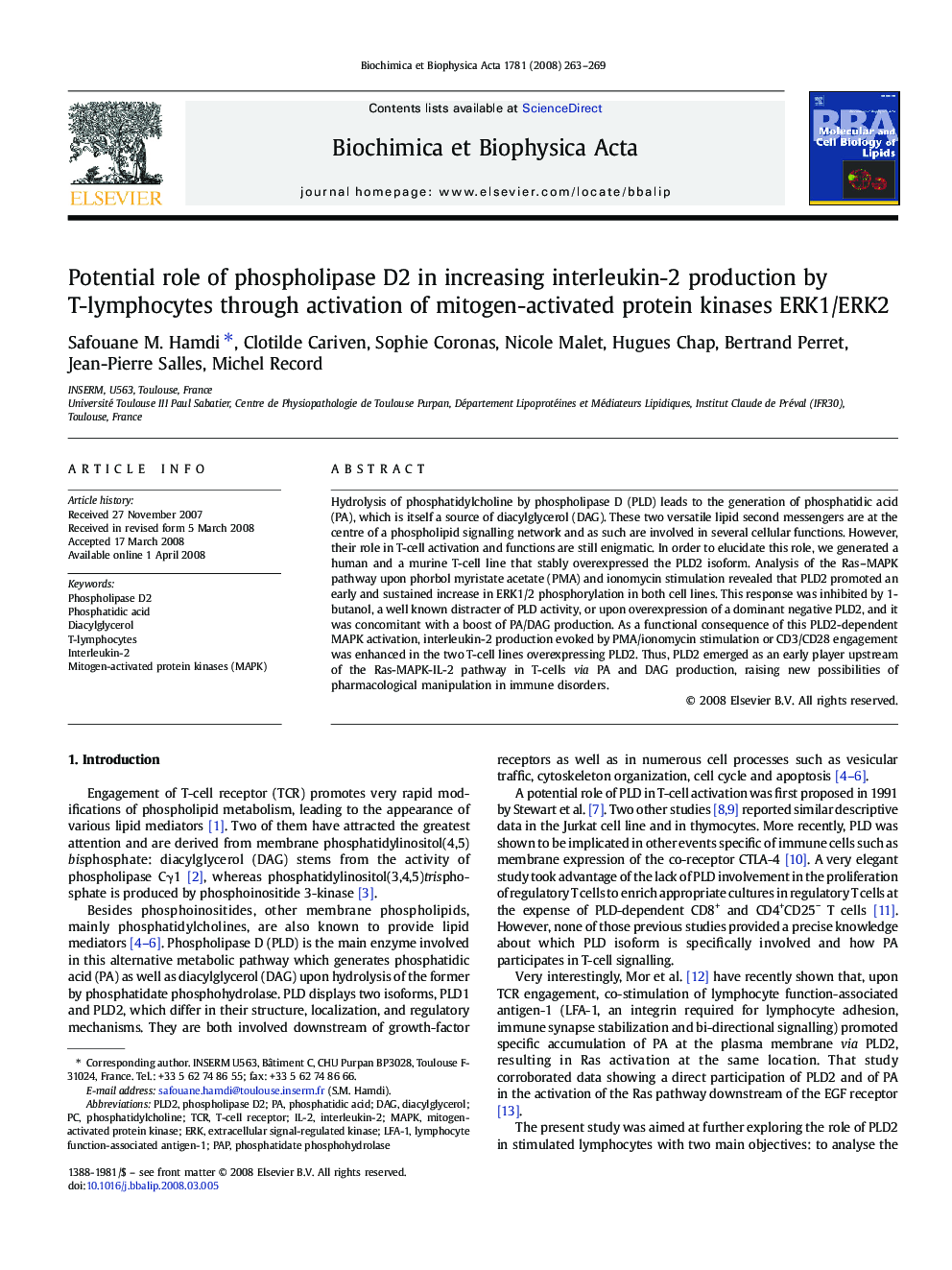| Article ID | Journal | Published Year | Pages | File Type |
|---|---|---|---|---|
| 1950056 | Biochimica et Biophysica Acta (BBA) - Molecular and Cell Biology of Lipids | 2008 | 7 Pages |
Hydrolysis of phosphatidylcholine by phospholipase D (PLD) leads to the generation of phosphatidic acid (PA), which is itself a source of diacylglycerol (DAG). These two versatile lipid second messengers are at the centre of a phospholipid signalling network and as such are involved in several cellular functions. However, their role in T-cell activation and functions are still enigmatic. In order to elucidate this role, we generated a human and a murine T-cell line that stably overexpressed the PLD2 isoform. Analysis of the Ras–MAPK pathway upon phorbol myristate acetate (PMA) and ionomycin stimulation revealed that PLD2 promoted an early and sustained increase in ERK1/2 phosphorylation in both cell lines. This response was inhibited by 1-butanol, a well known distracter of PLD activity, or upon overexpression of a dominant negative PLD2, and it was concomitant with a boost of PA/DAG production. As a functional consequence of this PLD2-dependent MAPK activation, interleukin-2 production evoked by PMA/ionomycin stimulation or CD3/CD28 engagement was enhanced in the two T-cell lines overexpressing PLD2. Thus, PLD2 emerged as an early player upstream of the Ras-MAPK-IL-2 pathway in T-cells via PA and DAG production, raising new possibilities of pharmacological manipulation in immune disorders.
